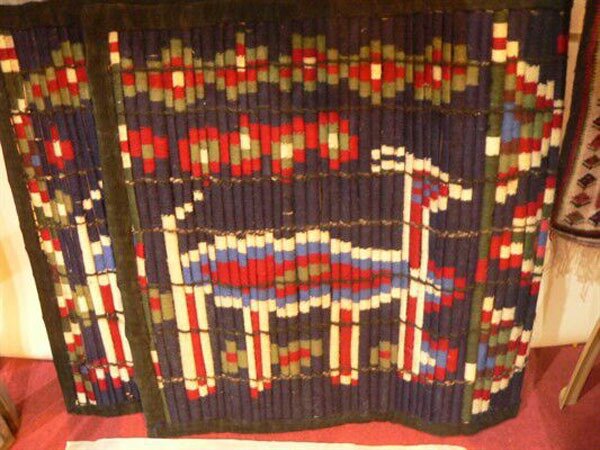Iranian handicrafts: Chigh of Ilam

TEHRAN – "Chigh" is the local word for a colorful nomadic wall-covering, which is woven by the skillful hands of crafters in Ilam province.
As stated by Visit Iran, the most important material of Chigh is a kind of reed and hair goat that is produced from the herd of nomads themselves. The reed is hollow and grows wildly in the natural habitat of nomads.
The weaver gathers the reeds from the surrounding land of the rivers. Depending on the diameter of the reeds, they are divided into three or four pieces, so that each piece is ten centimeters in width. Then they are woven together by the spun wool yarn that is usually colorful. The woman weavers analyze the design in their minds and weave each piece separately. Then they are arranged next to each other to make the intended design. Since the nomads have always been tent-dwellers and the Chigh has been used as the covering of the tent walls, the history of the Chigh has entwined with the history of nomadic tents.
Not only is Chigh a beautiful and fascinating product, but also it prevents heat, cold, wind, and dust to enter the internal space. One reason is that the reeds are hollow which allows them to act as a filter. On the occasion of rainy and cold weather, the humidity adds to the volume of the reeds and makes them attach and prevent the cold. When the weather is hot and dry, the reeds shrink and leave spaces for the air to pass through. In addition, the hair goat produces a strong shade which makes a Chigh an ideal awning. Another interesting characteristic of hair goats is that it is a natural repeller of insects and snakes.
The traditional Chigh is decorated with symbolic and versatile motifs such as “Togh Savar”, “Eask” or gazelle, “Ghezhak” or crab, “Pardal” or eagle feather, star, duck, and geometric motifs that are inspired by both nature and memory of the weaver.
The tools of making a Chigh are no more than the simple and primitive sickle, knives, grinds, scissors, needle, and stitching awl, and it is the taste and skills of the women weavers that make these products valuable. Today, considering the design of the Chigh and the fact that the distance between the reeds is adjustable, this product can also be used as shutters, dividers, wall coverings, and decorations in urban houses, too.
According to Dehkhoda Dictionary, Chigh is “a Turkish word and shutter-like weave that is made of common reed and thin wood branches and hanged in front of the entrance door. However, in different regions, it is known with different names such as Alaghigh, Chikh, Chit, and Chig.”
The majority of land in the lesser-known Ilam province is a continuation of the valley of Mesopotamia and was formed by the deposition of sediments eroded from the Zagros Mountains. Agriculture is the principal occupation of the region; barley, wheat, rice, oilseeds, potatoes, and dates are grown.
AFM

Leave a Comment